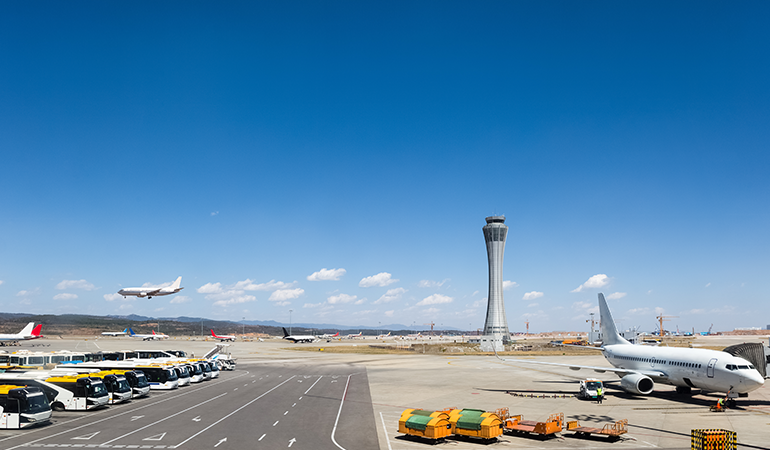We have all likely heard of the comparative cost of preventative maintenance versus equipment failure from neglect, but what do the actual numbers look like?
“An ounce of prevention is worth a pound of cure.” -Benjamin Franklin
While it is doubtful that Mr. Franklin was speaking about heavy equipment maintenance, particularly aircraft ground support equipment, it makes the statement no less true for this application. Whether it pertains to the Volkswagen in your garage or the Detroit V-8 diesel in a massive air start cart, it is always cheaper to maintain equipment vice extensive overhaul and repair. But just how costly is extensive repair and overhaul on GSE? How much does it take to keep your equipment in reliable condition? Let’s take a look at if it saves you anything to conduct preventive maintenance and if so, what is the overall cost benefit.
Ground support equipment maintenance: Prevention or Prediction?
Before going down the rabbit hole of preventative maintenance versus reactive maintenance, there is a significant question to ponder and extrapolate first: if mechanical failures can be prevented, can they also be first predicted?
There is no completely iron-clad answer to this question, although with each passing day it is becoming much more apparent that predictive maintenance is growing to be a useful stablemate to preventative maintenance. “But wait”, you intuitively ask, “isn’t this a prevention OR prediction equation?” This is a valid assertion and a great question.
The answer is not altogether conclusive at the present time, but a clear picture is emerging now of the collaborative nature of the two maintenance ideologies/methodologies. Preventative maintenance is the process of applying liberal maintenance to items which, through historical evidence, engineering edict, or conventional wisdom, have proven to be common points of failure. This is a very broad brush to stroke with, though, and can ultimately lead to excessive spending on areas of machinery which may not end up being wholly necessary. Conversely, preventative maintenance fails to offer the ability to examine if there are systems of components which are trending to fail at apremature rate to their design life.
The Conventional Wisdom on GSE maintenance
The conventional wisdom remains that preventative maintenance is a much preferred option to overhaul and repair. That being said, does preventative maintenance ensure that major repairs will never be necessary? Absolutely not. There is no way to accurately predict all mechanical failures. Also, there is no way to prevent all mechanical failures. However, emerging methods using data analytics are turning the tables. Organizations employing heavy equipment (i.e., aircraft and GSE) are already investing significant funds in preventative maintenance cost, which are not cheap. But they are also having to set aside capital for equipment failure which could be potentially predicted or prevented.
The traditional model of PM in the Maintenance, Repair, and Overhaul (MRO) model is to simply apply PM principles to just about anything that can be greased, oiled, cleaned, etc., and hope for the best. Of course, the problem herein lies that once a component fails, especially a critical component, that component, system, or entire piece of machinery is out of commission until said component is repaired, replaced, or overhauled. Depending on the severity of failure, additional measures will need to occur to repair the entire system.
A great example of this is when a hydraulic system pump fails completely. When an aircraft hydraulic pump fails fully, metal shavings contaminate the system. The hydraulic systems on large jet aircraft can hold well over twenty gallons, depending on the make and model, all of which must be drained and disposed of properly. The system also must be flushed thoroughly, which might take just as much hydraulic fluid to flush as was contaminated in the system. Depending on how long the hydraulic system remained in operation after the fluid became contaminated, other components in the system, like hydraulic actuators, may also need to be replaced. So out of a single component failure in a system, we can see significant second- and third-order problems which make the repair infinitely more costly, not to mention hazardous. So now consider the potential cost savings if there were indicators which might present themselves if gathered and analyzed through data analysis. The hydraulic pump could then be inspected as part of standard PM processes (recall that predictive maintenance does not usurp preventative; it enhances it).
GSE System Repair
The above example is larger in terms of scale than you are likely to see on most pieces of GSE. but it is valuable in order to understand the tiered effect of component failure in machinery; it is the same concept, just a smaller scale. Don’t allow this to be misleading, though, because GSE failure will eat away at your bottom line just as easily as aircraft system failure. A quick glance at hourly overhaul rates for industrial diesel engines ranges anywhere from $75 per hour to over $150 per hour in just labor alone. When you include the thousands or tens-of-thousands for parts, and additional costs for machining or other services which could not be quoted until the engine is apart and you are going to expect many thousands of dollars for the overhaul. You may not be able to actually prevent the necessity of an overhaul on your equipment; industrial equipment are subjected to very harsh lives. But maybe you can use predictive maintenance strategies to finely hone preventative maintenance inspections and repairs and catch problems in their earlier stages, preventing catastrophic failures. A catastrophic failure of GSE components may end up destroying the equipment or equipment system beyond repair, whereas catching the problem beforehand allows it to be taken out of commision and repaired more quickly, easily, and with no added ill effects on the equipment as a whole.
Additional considerations
It can be safely asserted that there are no downsides to getting out ahead of component failure on any and all equipment. A single rivet stem will easily do hundreds of thousands in damage to the fans on a turbofan engine, worse if it ends up going through the core of the engine. This is a $0.25 part, a tiny rivet of which many thousands are on any given aircraft. This is exactly why pre-flight, through-flight, and post-flight inspections are standard fare for line maintenance, along with the much more intensive MRO maintenance cycles.
Thankfully, most systems of GSE are not quite as sensitive as a turbofan jet engine, but they still are certainly capable of being utterly ruined by conditions which cost very little (or nothing) to remediate. Ground power units are often run for many hours on end, operating at a steady and very high output. It is all too easy to forget about them, and at the high power settings they operate at it only takes a few minutes to destroy an engine on one if the coolant were to be lost from a failed hose, reservoir, or radiator. These are all low-cost items which are easy to overlook, yet the wellbeing of an extremely costly diesel engine lies solely on this one system.
Air start carts use an actual turbine engine to produce bleed air necessary to start aircraft turbine engines, and these little engines are every bit as vulnerable to foreign object damage as their big brothers, especially since they are encased in a steel wagon for lack of a better description. There are lots of opportunities for a straty bolt, washer, or nut to come loose and destroy these diminutive turbine engines, which come with a full-size price tag for repair.
Incorporating a program of basic preventative maintenance and checks will go a long way to preserving your invaluable GSE. Most of the indicators of impending damage or failure are readily available to check, and should be prior to all operations. Take a quick look at rubber hoses, radiators and storage. Pull out the engine oil dipstick and check quantity, then look closely for any sign of water bubbles in the oil, and the metallic speckles which are tiny metal shavings. If any of these are indicated, take that piece of GSE off of the ready line and have it thoroughly inspected immediately. Again, you may not be able to avoid major repair at this point, but you might just prevent catastrophic failure.
Conclusion to GSE maintenance
What exactly does it cost to prevent failure on aircraft and their support equipment? That involves far too many variables to list and calculate here, but one thing is for sure: any amount of preventative and predictive maintenance are still far less expensive than repairing total and complete system or machine failure. Replacing a cylinder head on a diesel engine for a power unit or tug is far less than replacing a completely destroyed engine. Of course, low maintenance GSE such as remote controlled tugs do tend to eliminate some of these problems altogether. The bottom line is to use the tools which are available, stay on the cutting edge of preventative and predictive maintenance, and always partake in the little checks which usually catch indicators of the biggest problems.
You want to improve your ground handling altogether? Get our free eBook now!



Comments